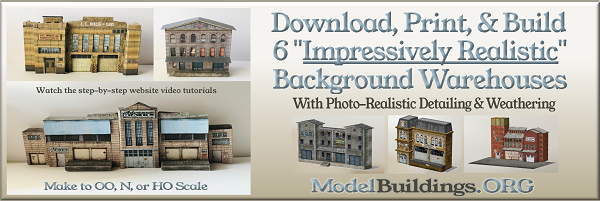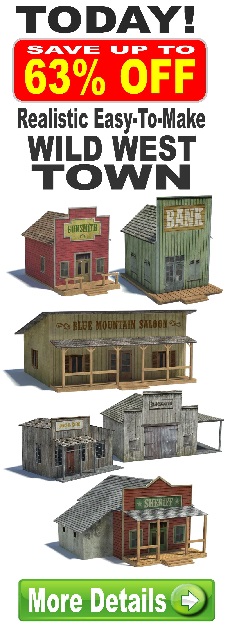Everything on model trains, model railroads, model railways, locomotives, model train layouts, scenery, wiring, DCC and more. Enjoy the world's best hobby... model railroading!
Converting Old DC Model Railroad To DCC
Henry has a question for readers:
“My old DC railroad is about 20 years old and is needing a facelift. Can it be changed to DCC without a lot of new wiring? I have several blocks so that I could control trains in different areas. Do I need to remove the blocks and make it all one block? Lastly, can my old engines be converted to DCC or do I have to buy new dcc equiped engines?”
Comment below.
7 Responses to Converting Old DC Model Railroad To DCC
Leave a Reply
















What I always do is wait until the last minute, in the mean time have a figure in mind then put your bid in but about £10 more this usually works.
Keep the blocks. Here are some reasons: Blocks allow for quick trouble shooting in case of problems like short circuits. Also, with DCC you can add digital block detectors (I don’t know how your layout is), if you ever decide to use a Computer to run your layout, you may want to use block detection, also works for any signals you want. I run DCC with many blocks, I have the choice to switch them off and on as I wish. I like to park trains in some blocks and switch them off. All of my locomotives have sound, so I can have them silent in a “off” block.
As for your old engines: As long as your engine’s motor does not draw too much current, (1amp or above), and there is some room inside of the shell, you can install DCC. I like to install DCC and Sound, and that requires more room for a speaker. Installing DCC requires that you “isolate” the motor from the frame, that can be tricky sometimes, but can be done. You may also have to change your lights to match the decoder’s specs. The new DCC and DCC/Sound locomotives offer superb detail and specs like: Can motors, special lighting, dual flywheels etc. I like to program the loc’s road number into the decoder as the “address”. The cost of decoders has really come down in price, and control systems too. You will love DCC, and will wonder how did you ever run trains without it?
You can keep the blocks but you lose much of the functionality of DCC if you do. Ideally for DCC every piece of track should be live at all times, except maybe dead end tracks for storage so changing to DCC means a lot of extra jumper wires and or isolators if you use live frog points to “Liven up” those dead sidings and loops when the points are against them.
However you need blocks, isolators, for fault hunting, and lets not forget the 4 amp DCC current can make a hell of a mess of your loco of you get a short. So basically I would keep your feed blocks as fault check isolators, and add jumpers to liven up the sidings.
I have too many locos for DCC, I have no way to tell my 6 Castles or 5 Halls apart and there are over 60 locos in total.
I think any OO loco can be DCC converted, the H/D Wrenn vertical motor ones are probably the worst and need insulated wheels both sides, mainline /bachmann split chassis need the application of a hacksaw to reveal and insulate the motor brush tags from the chassis and the old Triang need insulated brush springs both sides but as long as you can seperate the brush polarity from chassis polarity and can find room, with or without hacksawing lumps off the chassis there is no problem, oh, and insulate the couplings from the chassis. I hear reports of burned out pickups and greatly reduced point (switch) life from DCC if you get shorts, even fires which also puts me off. Im looking at on board batteries and radio control at present
I agree 100% with Jay’s comments above. Keep your blocks they make trouble shooting easier plus if you have a problem in one area you can isolate it and still run on the rest of the layout. You also will find running a buss from your block switch to your track dropdowns you will end up pulling excess wire out. I Have at least one drop for every 3 ‘ of track. I use flex track. I also make sure there is power to all ends of a turnout.
I’m starting out all over again after a 45 year professional life that just didn’t have time for the hobby. So I am somewhat new as well, but have purchased new DCC and several older DC locomotives and engines and converted them to DCC successfully.
All the advice above is good and asking is what I have done and watched several You Tube video’s showing the processes for DCC. The first thing I learned was; it is not as difficult as I feared and the reward of operating a DCC layout is worth the effort. If you have a locomotive or engine you just don’t want to convert set it aside, display it, send it to a professional, or sell it on E Bay as many of these old classics are desired.and not to be found.
Thanks for asking the questyion as I benefitted from the responses as well..
This is great stuff. The layout is sensational. I’m just getting back into HO after a 40 year absence. I have always been a fan of the L and N. I now live in Tennessee just north of Etowah where there was a L and N yard.. I am gathering info on this part of the Land N trackage. It seems to be slow going. I know I want to model the roundhouse in Louisville but can’t seem to find any good photos of it. The roundhouse in Etowah, which was not round but rectangular, was torn down years ago. I believe it was when CSX took over.I am always looking for info. Enough for now, Ken
The L and N Historical Society has recently moved it’s archives from the Uof L Library to the Historic Rail Park in Bowling Green. I’m not sure what their requirements are to access them, but I’m sure you could call and they’d let you know. If you haven’t joined the society, they are also on line. Just look up L&N Historical Society and it will give you info. Dues start at $35.00/yr, and go up as you feel you want to donate. They send out 4 magazines a year with lots of old L and N info. Also you just missed last years annual meeting which was in Nashville in Sept. It’s a good source of information. Good luck.
Dave